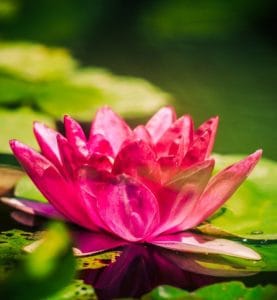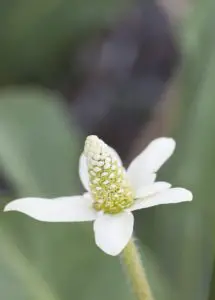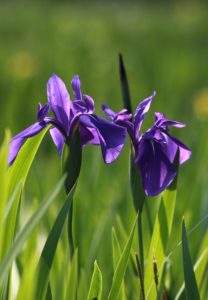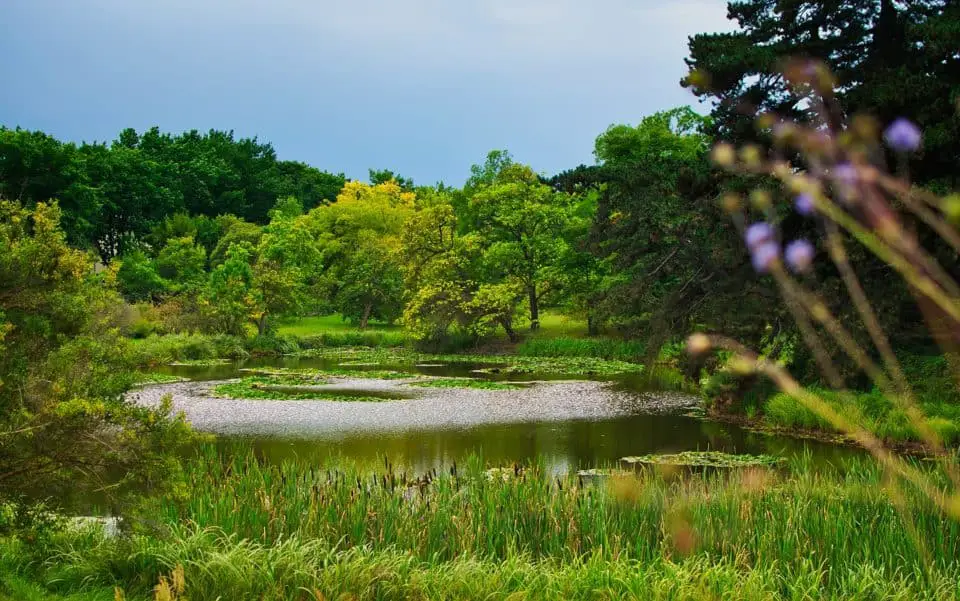Some links in the post are affiliate links and I get a commission from purchases made through some links found in the post.
There are many ways in which we can add to the beauty of our home gardens and adding a small pond to them is one of the ways.
A splash of blue amongst the green of your garden grass adds an aesthetic touch to your garden.
Ponds come in various shapes and sizes, depths and widths and offer a wide range of habitats, both man-made and natural, to a variety of wildlife.
There are also a good number of fish that can be grown in the ponds, that’s good news if you’re fond of fish.
The thing to take care of is that the pond should have an acceptable number of algae.
It should not be overcrowded with marginal plants. Your pond should be kept clean and pollutant-free.
Marginal plants are commonly selected for growth at or near the pond banks not only for visual appeal but also because of their wide-ranging benefits. These benefits include algae control and wildlife maintenance.
Of the numerous numbers of pond plants available, considering your environmental conditions and the size of your pond, selecting an appropriate marginal plant may look difficult.
But we’re here to help you out and have filtered the best marginal plants for small ponds.
What are Marginal Pond Plants?
 As evident by the name itself, marginal plants are those aquatic plants that grow near or at the edges of any water body be it a pond or a lake.
As evident by the name itself, marginal plants are those aquatic plants that grow near or at the edges of any water body be it a pond or a lake.
Marginal Plants help in shaping the shallow edges of the pond giving it a blended aesthetic look.
Aesthetic benefits aside, marginal plants are crucial in maintaining the health and vitality of the pond and its creatures.
The choice of marginal plants should be carefully done so that the pond looks closer to natural.
The marginal plants are all diverse in form and shape. They usually have their soil crown and lower parts of the foliage submerged underwater.
Marginal pond plants can commonly grow to a depth of 18 inches underwater. They have a tolerance for waterlogging all year round.
These can also tolerate a lower level of moisture but grow better in submerged states. Thus can also be grown in water-saturated soils. Marginal plants prefer sunny to partially sunny areas to grow.
Marginal pond plants can be flowering and can add vibrance to your garden. They can also be reeds that help keep the pond water clean.
What are The Best Marginal Plants for Small Ponds?
Every garden owner has his preference but this is our selection of the best marginal plants for small ponds:
1) Aquatic Iris
Aquatic or water Irises are beautiful vibrant plants whose flowers provide an eye-catching appearance to your pond and garden.
The flowers are mostly purple, blue or yellow. The most vibrant is the Blue Flag Water Iris (Iris virginica).
These grow best at the very side of the pond and cannot grow too much submerged in the water itself.
These provide a way for organisms of the pond to move out of the pond when the right time of their life cycle comes.
It also stabilizes the banks and helps in cycling the nutrients. People fond of colors should add this to their garden ponds.
2) Common Arrowhead
Common Arrowhead (Sagittaria sagittifolia) is also an excellent shallow-water marginal plant that features attractive arrowhead-shaped leaves.
It blooms mid-year to give white flowers with purple centres. It provides nutrition to pond fishes which feed on its nutrient-rich tuberous roots.
The thick roots also soak up excess nutrients from the water. It helps in maintaining the banks of the pond and protects them from erosion.
3) Horsetail
Horsetail (Equisetum hymenale) is an evergreen tall slender plant having a bamboo-like outlook. Its green stems feature a ring of a black sheath at each joint.
These non-flowering plants are quite hardy and disease resistant and would grow in places where other marginal plants couldn’t and also add to your ponds in the winter season.
4) Flamingo
Flamingo (Oenanthe javanica) is known for its variegated foliage and its pink and cream leaves add a delightful softness to your small garden pond.
This marginal plant adds shade to the pond beneficial for restricting sunlight that retards algae growth and for providing shelter to pond creatures.
5) Yerba Mansa
Yerba Mansa (Anemopsis californica) is often found growing in marshy habitats. It can be grown on the banks of a small pond.
The yerba mansa can grow in partial to full sun and blooms during the spring-summer period. It produces modified flowers with white petals.
It grows in a carpet like fashion and its seeds provide food for birds and also for fish if they shed into the pond.
6) Marsh Marigold
Known for its bright glossy buttercup-like yellow flowers, marsh marigold (Caltha pulustris) is a natural marginal pond plant and is also found alongside streams.
It can be propagated in your garden to give it a burst of fresh vibrant colour. This hardy plant requires little care, grows even in winter and produces nectar that attracts bees, butterflies, and hummingbirds.
Thus, making it ideal for your pond if you’re looking for bee-friendly plants to adorn your garden.
7) Creeping Jenny
Creepy Jenny (Lysimachia nummularia) is an oxygenating pond plant that has yellow-green vibrant leaves that grow elegantly alongside rocks in your small garden ponds.
It is used to adorn small artificial waterfalls some garden owners create beside their ponds. It requires full sun to partial shade to grow.
Since they have excellent ground cover, they smoothen the edges of your pond as well as provide shade to pond life.
You may also like: What are the fastest growing evergreen trees for small gardens
How Deep should Marginal Pond Plants be?
 Marginal pond plants are found along the margins of a pond which are found in shallow water about 6 inches (15 centimetres) deep.
Marginal pond plants are found along the margins of a pond which are found in shallow water about 6 inches (15 centimetres) deep.
The roots and crowns of the plant should be completely dipped in water. They can tolerate dry conditions for upto a week but would not survive for any longer than this.
They can also withstand moist conditions but would not show the ideal growth that they show in submerged states.
When propagating marginal pond plants, it should be kept in mind that younger plants that are smaller than 9cm should not be submerged underwater immediately.
They should be allowed to grow in boggy soil for a certain time and then shifted to deeper depths.
Marginal plants when placed in ponds are placed within shallow planting shelves within the pond or can be raised by utilizing bricks.
Every marginal plant has an ideal underwater depth that should be kept in mind when propagating the plant.
Where Should Marginal Pond Plants be Planted?
Depending on whether the marginal plant of your choice has invasive roots or not, there is a difference in where you will plant your marginal plant.
Most marginal plants prefer width over depth thus it is less likely you will have to contain your plant.
However, if your marginal plant is aggressive and has invasive roots then there is a need to plant the marginal plant in a container with soil and compost and then submerged underwater.
Since the plant will be confined to a container and cannot obtain nutrients as efficiently from the pond as the other plants can, it would require regular fertilization.
What Pond-Plants Keep Water Clear?
If you’re looking for plants that keep your pond water clean and clear then there are certain plants that you should know of.
These are termed clear water plants solely for the reason that they are more effective in removing nutrients from the pond better than others. These include:
1) Water Iris
Water Iris (Iris pseudacorus) is a shallow-water plant that is known for its toxin removal properties. In addition to adding a splash of colour, these make your pond suitable for other aquatic life forms.
2) Hornwort
Hornworts (Anthocerotophyta) is a well-known oxygenating plant that helps prevent algae by cutting off its oxygen and nutrient supply. It also releases some chemicals that kill algae.
3) Pickerel Rush
Pickerel rush (Pontederia cordata) is a staple pond plant. It acts as a biofilter in cleaning and purifying the water in your pond.
4) Watercress
Watercress also acts as a filter by competing with algae and filtering the waste produced by fish. Besides this, it is an edible plant and adds fresh green colour to your small pond.
Final Thoughts
 A pond is a lovely addition to your garden if you want diversity to it. What makes a pond, a pond is beautiful plants in and around it.
A pond is a lovely addition to your garden if you want diversity to it. What makes a pond, a pond is beautiful plants in and around it.
The marginal plants make a great addition to the edges of any pond smoothening the bank and adding pops of colour to them.
Not only this, marginal plants provide shelter and habitat for small pond creatures. They also act as filters and maintain the quality of your pond water. Marginal plants prefer different depths of water to grow in.
There are many marginal plants to choose from but the best ones for small ponds are Aquatic Iris, Common Arrowhead, Horsetail, Flamingo, Yerba Mansa, Marsh Marigold and Creeping Jenny.
Using any of these delightful plants would add to the beauty of your pond and garden
Before you go, here are some more related articles I encourage you to read below to help solve more of your gardening issues:
What are the best oxygenating plants for small wildlife ponds

